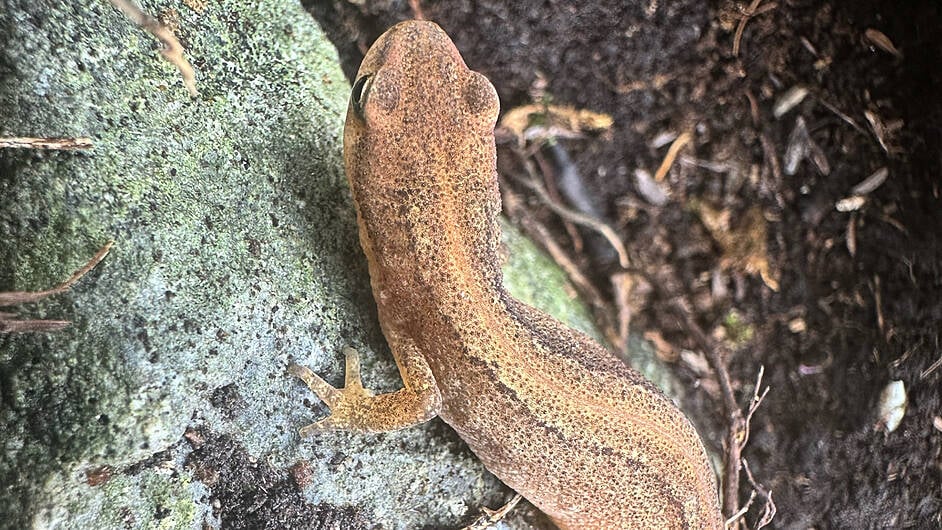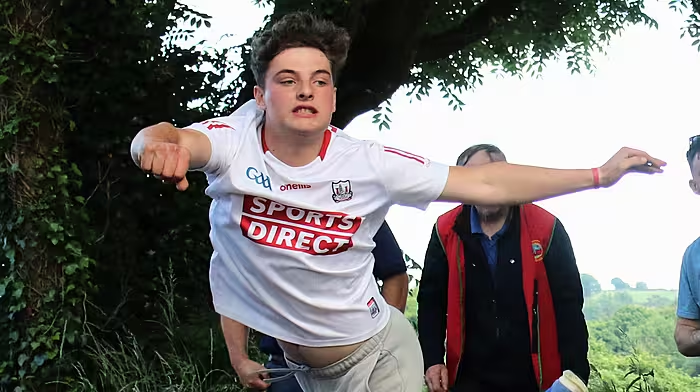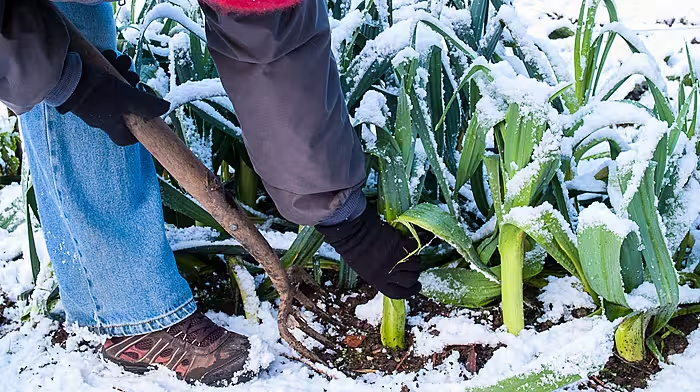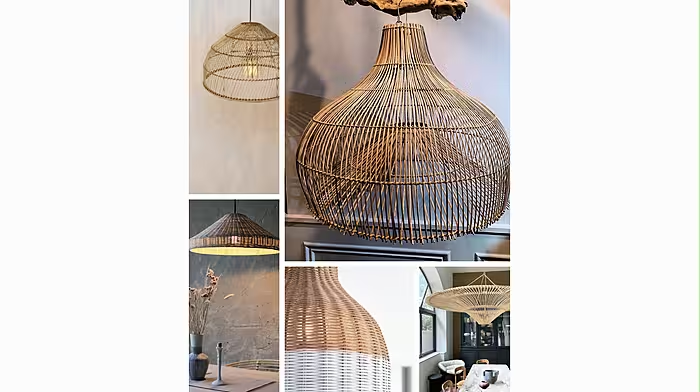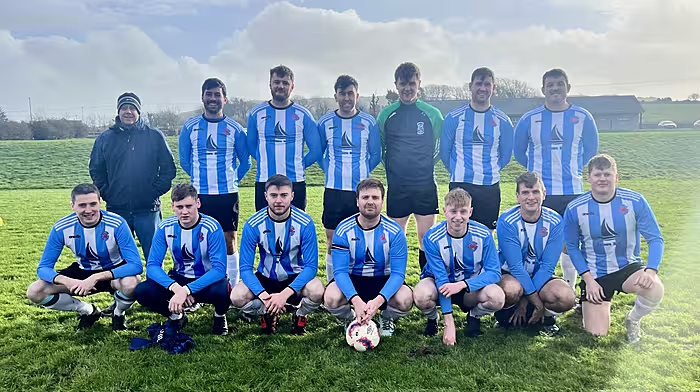
IF you are familiar with the Joe Walsh Walkway alongside Gallanes Lough in Clonakilty, you may have noticed some new features and wondered about their purpose. Between the lough and the walkway, a series of shallow, fenced-off ponds have been created.
These ponds are part of an exciting conservation initiative designed to support the lough’s populations of smooth newts (Lissotriton vulgaris). Although the project’s main focus is to support smooth newts, the habitat enhancement measures taken will also be of benefit to common frogs (Rana temporaria).
Amphibian workshop
The conservation work at Gallanes Lough is being undertaken by Cork County Council in collaboration with the Herpetological Society of Ireland (HSI). Funding for the project has been provided by the National Parks and Wildlife Service through the Local Biodiversity Action Fund and also includes provisions for a citizen science initiative.
With that in mind, local residents were invited to an amphibian workshop held at Gallanes earlier this month. I was delighted to have the opportunity to attend and learn more about the project, and to see how members of the public can contribute by volunteering to monitor frogs and newts at the site.
Spotlight on newts
The smooth newt is Ireland’s only native tailed amphibian and is often mistaken for the common lizard, Ireland’s sole land reptile. However, newts are usually found near waterways and ponds, whereas lizards prefer sunlit, drier habitats. Unlike lizards’ scaly skin, newts have smooth skin, and they also differ in their toe count: lizards have five toes on their front feet, while newts have four.
Smooth newts are carnivorous, feeding on invertebrates both on land and in water. They also prey on frog tadpoles, highlighting the importance of supporting both species at the same time.
A helping hand
Newts rely on water for breeding, but the presence of large predatory coarse fish in the lough pose a threat. The newly constructed ponds at Gallanes Lough are crucial to address this, offering a safer and more sheltered breeding environment.
While water is vital for reproduction, suitable terrestrial habitats are equally important, as, when not breeding, newts spend most of their lives on land. They prefer long grass, woodlands, and scrub. During winter, they hibernate in frost-free locations underground, often among tree roots or in old walls.
To support this need, the project has also created specialised winter shelters called hibernacula for both frogs and newts. These appear as simple mounds of earth but are meticulously designed: dug below ground, filled with stones and vegetation to create gaps and crevices, and then covered with more vegetation and soil. These structures provide amphibians with dry, frost-free spaces to survive winter. Next time you’re on the walkway, keep an eye out for them!
Unusual tactics
During the workshop, participants also learned about the fascinating breeding behaviour of smooth newts. Males perform a courtship dance, orienting themselves vertically in the water and releasing pheromones to attract females. Physical contact is minimal; males deposit a sperm package, which females collect to fertilise their eggs.
Each female may mate with several males and during each breeding season will lay up to 300–400 eggs in pond vegetation. Remarkably, each egg is individually wrapped in a folded leaf, which is carefully secured using the female’s back feet. Once hatched, young newts initially breathe through external feathery gills located behind their heads, but these disappear as they mature and are gone by the time they leave the water later in the summer.
 One of the common frogs found at the new Gallanes Lough ponds. (Photo: Ann Haigh)
One of the common frogs found at the new Gallanes Lough ponds. (Photo: Ann Haigh)Newts in the news
Newts made headlines earlier this year when Rob Gandola, a herpetologist with the HSI, discovered a species that was new to Ireland in West Cork. This was the palmate newt (Lissotriton helveticus), which is native to Britain, but was previously undetected here.
To protect the species, their exact location has been kept confidential. Scientists are closely monitoring the situation to understand how this species arrived and whether it poses a threat to native newts.
A threat to native newts
A third newt species, the Alpine newt (Ichthyosaura alpestris), was first discovered in Ireland in 2012.
This more brightly coloured and exotic looking species can now be found in large numbers in ponds in counties such as Offaly, Tipperary, and Down.
Alpine newts are not native to Ireland, or Britain, and are known carriers of chytridiomycosis, a deadly fungal disease affecting amphibians which has the potential to be devastating for our native smooth newts.
Monitoring success
The initial signs that the ponds and associated measures will be a conservation success look good. Though only created six to seven weeks prior, plant and invertebrate life seemed to be rapidly populating the ponds.
During the workshop, we were even fortunate to find several frogs already enjoying their new amenities.
However, one of the key measures will be the number of frogs and newts using the new ponds to breed. Frog spawning seems to be occurring earlier in the year.
It is now common to find frog spawn from end of January with the West Cork region’s first reports usually coming from Glengarriff, where the frogs appear to start laying from December. Therefore, keep an eye out for updates early next
year.
If you’re interested in learning more, or volunteering your time to help monitor for frogs and newts as part of citizen science, ocontact the biodiversity section of CorkCounty Council, at
[email protected].

